I sometimes say that one of my favorite genres to read is memoir. I recommend that Christians (although the principle holds true for anyone) read memoirs as they give us a glimpse into how some people narrate their own lives; nearly every good memoir is about the search for meaning, after all, and the making of a life. When we become accustomed to learning how people tell their own life stories we are more adept at understanding people. We become more empathetic. Of course we don’t have to agree with their life choices or approve of how they construe their story. Still, we may learn to be less stubborn, realizing as we do when we enter other’s stories, that not everybody sees (let alone experiences) the world as we do. For those that care about sharing the gospel with others, reading memoir is an exercise in listening well and understanding what makes people tick.
In other words, entering the written stories of others just might make you a nicer person; at least it will make you more interesting conversationalist at the church potluck.
Just think of some of the hugely popular memoirs in recent years, from Running with Scissors by Augusten Burroughs to the comic pieces by David Sedaris, from the significant Angeles’s Ashes by Frank McCourt to the searing story of The Glass Castle by Jeannette Walls to the unforgettable book about snake-handling Salvation on Sand Mountain by Dennis Covington. We love the edgy tales of Anne Lamotte and Donald Miller and Lauren Winner, and the eloquent memoir of Sarah Miles who wrote Take This Bread: A Radical Conversion, and for those that like that style, the great Grace for Amateurs: Field Notes on a Journey Back to Faith by the irrepressible Lily Burana, not to mention the beautiful, understated set of four memoirs by Frederick Buechner, all religious narratives which stand in the linage, somehow, of the best-selling 1948 conversion autobiography of Thomas Merton, The Seven Story Mountain. From Just Kids to Long Way Gone to Hillbilly Elegy to Reading Lolita in Tehran to the older, gorgeous, Out of Africa, the Time Quartet by Madeline L’Engle to the recent Lyme-disease/chronic-illness memoir called Sick by novelist Porochista Khakpour, or the much-discussed I’m Still Here by Austin Channing Brown, we will never, ever forget some of these well-loved stories. And I will read any further memoirs by Michael Perry, Catherine Gildiner, Mary Karr and Kim Barnes.
One could go deep into this conversation. Some say the sinner/Saint Augustine was the first to write what we might call a self-aware, true memoir, and we are still reading his Confessions nearly two millennia later. (Just today somebody ordered some of the colorful Sarah Ruden translation to offer at their church.) Why is that?
I’ll spare you the lit lecture and get to some recommendations — I’m itching to tell you about memoirs Beth and I have read this summer. (Although, as an aside, stay tuned as we tell you 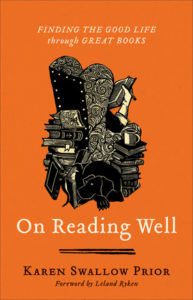
 more, later, about one of our big events of the fall, hosting author Karen Swallow Prior here at the shop on September 14thas we celebrate her new book, On Reading Well: Finding the Good Life Through Great Books. While that book is about how we can be spiritually and ethically formed by novels, she herself has also written a straight biography (of the poet-abolitionist Hannah More) and a memoir arranged around the books she most loved growing up, wonderfully called Booked: Literature in the Soul of Me (T.S. Poetry Press; $17.95.) We are glad for that lovely work, Prior’s first book, a small, literary memoir.
more, later, about one of our big events of the fall, hosting author Karen Swallow Prior here at the shop on September 14thas we celebrate her new book, On Reading Well: Finding the Good Life Through Great Books. While that book is about how we can be spiritually and ethically formed by novels, she herself has also written a straight biography (of the poet-abolitionist Hannah More) and a memoir arranged around the books she most loved growing up, wonderfully called Booked: Literature in the Soul of Me (T.S. Poetry Press; $17.95.) We are glad for that lovely work, Prior’s first book, a small, literary memoir.
Also, before the list, I have to say this, too; hang in there with me as I offer a slight curve ball, adding another genre of writing, a genre that can offer an incredibly entertaining joy ride of learning and can be a magnificent art form — namely, what is often called narrative non-fiction.
In the 1960s a new sort of journalism developed – it was called the “new journalism,” actually, shaped by the likes of the late Tom Wolfe which combined reporting with the stylings of fiction writers. One of the few books I recalling reading as a 60s youth (I didn’t read that much) was a great book by journalist/dare-devil George Plimpton who convinced a pro football team to take him on for a season as he wrote a thrilling expose of his time on the Detroit gridiron. Wow! It was immersive, hot writing, not the dry daily reporting of the Nasdaq and the straight-faced nightly news but it was reporting — live, vivid, dirty, right from the field. This was the stuff that wasn’t on the back of the football cards or on the sports section of the paper.
I later concluded there might be a personality type (who may be addicted to adrenaline, or more) who ends up doing embedded journalism, war correspondence, and other dangerous stories; they thrive on the thrill and the telling of it. Some of the writing in those years of the new journalism was so wild and drug-fueled and colorful that guys like Hunter Thompson were soon called “gonzo” journalists. His Fear and Loathing in 1972 was seminal. This isn’t the cheap tell-all of an Omarosa or the stiff autobiography of any number of famous people who write their bloodless books. Rather, the new journalism and the gonzo journalists take you there, help you see and feel the very texture of the story as you join them in the fray.
It made non-fiction writing a cool, cool thing.
And reading it a moving, even cathartic experience.
Nowadays one needn’t be gonzo to be good, but that free-spirited, risk-taking reportage is more common than it used to be and even scholars and staid historians are more free to put themselves into their books; nobody buys the myth of neutrality, now, anyways, so writers are free to get on with it, passions and biases and all. Ordinary coverage of a topic can become so engaging and written with such verve, with the author telling her own story as she covers the topic, that it feels almost like memoir. (Even knowing this, the publishing world was astonished when a book called Cod – yes, about the fish — became a beloved bestseller two decades ago.) Much non-fiction works that way these days so we call it narrative nonfiction.
Here is a review I did of a spectacularly written work of reporting, narrative non-fiction at its best, by the excellent writer Eliza Griswold. (You may know her name from her excellent The Tenth Parallel: Dispatches from the Fault Line Between Christianity and Islam or perhaps because she is the daughter of Frank Griswold, former Presiding Bishop of the Episcopal Church, whose book Tracking Down the Holy Ghost we have featured here.) I recently had this review of Amity and Prosperity published in the Pittsburgh Post Gazette and I wanted to share it here. I should have said more, but had space constraints; it really is an amazing piece of work and very highly recommended, no matter where you live, and especially if you are unaware of the dangerous consequences of industrial fracking.
After this review I’ll list a handful of other favorite memoirs and/or narrative non-fiction we’ve read this summer. ALL ARE ON SALE FOR 20% OFF. Use our secure order form (see link, below) or give us a call.
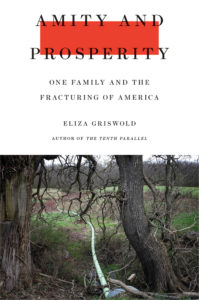 Amity and Prosperity: One Family and the Fracturing of America Eliza Griswold (MacMillan) $27.00 Few readers outside of the greater Pittsburgh area will catch the reference of the title of the stunning new book, Amity and Prosperity, not realizing that they are names of two neighboring towns near Washington, PA. Locals know that these small towns are classic examples of the post-industrial geography of Western Pennsylvania. If Hillbilly Elegy famously portrayed the rustbelt ethos of Appalachian transplants into southern Ohio, Amity and Prosperity tells with vivid detail the contours of daily life in Washington and Green counties, the northern edge of Appalachia that is no longer sustained by coal fields or steel mills and that less than a decade ago faced an “energy gold rush” with an influx of workers and money and drugs, drilling for natural gas.
Amity and Prosperity: One Family and the Fracturing of America Eliza Griswold (MacMillan) $27.00 Few readers outside of the greater Pittsburgh area will catch the reference of the title of the stunning new book, Amity and Prosperity, not realizing that they are names of two neighboring towns near Washington, PA. Locals know that these small towns are classic examples of the post-industrial geography of Western Pennsylvania. If Hillbilly Elegy famously portrayed the rustbelt ethos of Appalachian transplants into southern Ohio, Amity and Prosperity tells with vivid detail the contours of daily life in Washington and Green counties, the northern edge of Appalachia that is no longer sustained by coal fields or steel mills and that less than a decade ago faced an “energy gold rush” with an influx of workers and money and drugs, drilling for natural gas.
The subtitle: One Family and the Fracturing of America is a significant play on words as well as this riveting book is very much about the contested practice of industrial fracking and how its deadly side effects – poisoned air and water – disrupted these congenial small towns and the larger social fabric around Washington. From Cannonsburg to Eighty-four to Cecil Township, from Lower Ten Mile Presbyterian Church to the Subway restaurant at the Lone Pine truck stop, to Southpointe, the Range Resources headquarters near the corporate hub of the oil and gas boom, the specificity of the description is spot on, clearly recognizable for anyone who lives near or has visited south-central Washington County. Although the story is a page-turner exposing corporate injustices, dishonesty, and public malfeasance – one can hardly believe how bad it gets as one family fights back against the cover-ups of the poisoning of their water – it is still appealing to read about places one knows. (How I smiled when the author describes the strikingly odd anti-environmentalist billboards on the Pennsylvania Turnpike.) The book is being talked about throughout the county, but it really is a book about Yinzer territory.
Eliza Griswold is a talented and award-winning non-fiction writer, a reporter known for The Tenth Parallel, a book about inter-religious conflict mostly in the Middle East. In Amity and Prosperity she nearly embeds herself with several families and walks with them through their years of illness, losing their home, and their desperate sleuthing, investigating the poisons in their air and water. (Their own testing done with the help of local doctors proved that Range, the fracking company, was fudging the data and not being forthcoming about the chemical spills and toxic leaks from several of their fracking wells and storage ponds.) The book opens at the beloved Washington County Fair and the young people who show pigs and goats, their friendships nurtured through years in 4-H. As one teen’s animals get sick and mysteriously die, as does her neighbors prize winning horse, the reader is drawn in, knowing this portends great trouble that may not end well.
Griswold is an energetic writer and the characters she about which she tells are themselves colorful and raw and dogged, making this a great read. Their suffering seems relentless, their fears and foibles understandable, and we learn about all sorts of chronic illness, family struggles, and the consequences that bad environmental health has on their lives and community. (The social stress of speaking out among neighbors who might disapprove of their anti-fracking concerns and the differences of opinion about the vast amount of money the frackers offer, is portrayed realistically; some scenes are painfully awkward as long-time friends try not to fall out over their differences about selling out to Range.)
The plot unfolds as we see the impact this has on the teen-aged children, their extended families, their church friends, the local Fire Hall and such. Their hopes for vindication (and money for safe water service) are dashed over and over as the state DEP and the national EPA drop the ball, even on fairly obvious matters. The complicity of the DEP with the fracking industries and their refusal to press charges when environmental safeguards are disregarded are breathtaking.
Eventually a heroic lawyer couple, John and Kendra Smith, take on lawsuits against Range Resources, starting in the Washington Court of Common Pleas and eventually suing the State of Pennsylvania contesting pro-fracking policies of the Corbett administration in a case that went to the State Supreme Court. With simultaneous legal battles from Pittsburgh to Harrisburg, Amity and Prosperity becomes not only a glimpse into post-industrial small towns and the environmental consequences of fracking but also a legal thriller, worthy of any novel by Grisham. One observer called the lawyers “Mr. and Mrs. Atticus Finch.” Do you know the movie Erin Brockovitch? This story makes that look like kid’s stuff.
Amity and Prosperity: One Family and the Fracturing of America tells of small town life with richly textured tales of the Izaak Walton League and the county fair and the local Bible study. It also tells about earthy folk who try to stick together, sharing a community fabric that unravels when outsiders bring huge upheavals and loads of money, all in the name of progress. It also expertly shows the big picture of state and national policy, of how laws and various administrative agencies enhance or diminish the social architecture of small towns and rural areas, of the human consequences of the red and blue ideologies vying for influence. Mostly it tells of some Western Pennsylvania families, some sick kids, some corrupt businesses, and the drama of speaking truth to power, learning to be a whistle blower, and finding the faith and courage to move on, despite all.
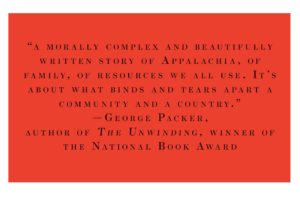
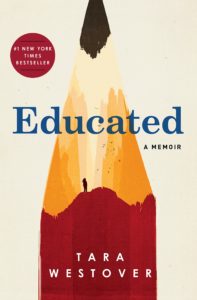 Educated: A Memoir Tara Westover (Random House) $28.00 This is one of those books that I can’t stop thinking about, well written and moving, but very sad and painfully hard, at times. The story cannot be captured briefly as it is multi-layered and the plot takes turns and turns and more turns as the author grows up in a secluded, dangerously off-the-grid family, goes to college, and, eventually, against all odds, to Cambridge and eventually earning a PhD from Harvard. What is so breathtakingly stunning about this story is that the author was raised with hardly any formal education on a mountainside farm in rural Idaho where her parents were fundamentalist Mormon extremists. Although she later comes to believe her father may have been bi-polar, she and her many siblings grew up fearing the Illuminati, the brain-washing forces of the public schools, the medical establishment, all part of a vast, Satanic government conspiracy, all of which they militantly avoided. Her father passionately preaches against the government, expecting the ends times and a violent apocalyptic attack on their property. This is made all the more real when some of their nearby militia neighbors, the Weavers, were murdered by government officials at the Ruby Ridge stand-off in 1992; even with that story as part of their growing up, they never knew the full truth of it as their father was so skewed in his paranoia.)
Educated: A Memoir Tara Westover (Random House) $28.00 This is one of those books that I can’t stop thinking about, well written and moving, but very sad and painfully hard, at times. The story cannot be captured briefly as it is multi-layered and the plot takes turns and turns and more turns as the author grows up in a secluded, dangerously off-the-grid family, goes to college, and, eventually, against all odds, to Cambridge and eventually earning a PhD from Harvard. What is so breathtakingly stunning about this story is that the author was raised with hardly any formal education on a mountainside farm in rural Idaho where her parents were fundamentalist Mormon extremists. Although she later comes to believe her father may have been bi-polar, she and her many siblings grew up fearing the Illuminati, the brain-washing forces of the public schools, the medical establishment, all part of a vast, Satanic government conspiracy, all of which they militantly avoided. Her father passionately preaches against the government, expecting the ends times and a violent apocalyptic attack on their property. This is made all the more real when some of their nearby militia neighbors, the Weavers, were murdered by government officials at the Ruby Ridge stand-off in 1992; even with that story as part of their growing up, they never knew the full truth of it as their father was so skewed in his paranoia.)
Westover writes well, with just enough gusto to easily engage readers (I stayed up too late several nights running because I was so captivated by her story) but never too passionately; this is not as anguishing as, say, The Glass Castle nor as intensely focused on her interior life as, say, Kim Barnes’s luminous In the Wilderness or Hungry for the World, also set in cult-like families in the wilds of Idaho.
If anything, Westover is more than fair to her hurtful family, and gracious (as gracious as is plausible) in coming to terms with her unusual girlhood, a girlhood she routinely tried to cover up and lie about as she made her way into the broader world. (Indeed, coming to grips with her own identity and past are key parts of her emerging story and it is a breakthrough when she finally tells a boyfriend who she really is (or, more precisely, who her father and mother really are.)
There are some horrible episodes described in Educated, related to their refusal to take normal medical care (she and her brothers and father were often injured in their demanding scrap metal work which itself is well-described.) There were heart-breaking scenes of Tara not being allowed to be involved in normal stuff like a dance class in town (the leotards were, of course, too immodest) or church youth group (their local Mormon church was too liberal.) Naturally, they didn’t believe in registering their vehicles, let alone their guns. At every point, this family, for all its strengths and self-sufficiency, is dogmatic, harsh, paranoid, profoundly anti-modern and deeply troubled.
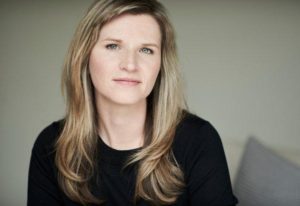 That Tara ended up getting her GED and passing the ACT was itself a miracle — she really had no schooling to speak of — and we are brought into her deep quandary as she bravely determines to leave her stern, bizarre, family and enter the devil’s territory in higher education. That she got to know some “normal” people and found ways to handle college is a large part of the story, and it is truly fascinating, at times funny, and at times exasperating as she makes wrong-headed choices, over and over. (How could she not – her mother is brain-damaged and yet a mogul making essential oils and homeopathic remedies and her father is a cruel, deluded, demanding patriarch.) The writing isn’t as witty as the extraordinary Liars Club, Cherry, and Lit by the spunky Mary Karr, but I kept thinking of those colorful stories as I was racing through Educated. Oh what some people go through, and how they find the means to cope and thrive.
That Tara ended up getting her GED and passing the ACT was itself a miracle — she really had no schooling to speak of — and we are brought into her deep quandary as she bravely determines to leave her stern, bizarre, family and enter the devil’s territory in higher education. That she got to know some “normal” people and found ways to handle college is a large part of the story, and it is truly fascinating, at times funny, and at times exasperating as she makes wrong-headed choices, over and over. (How could she not – her mother is brain-damaged and yet a mogul making essential oils and homeopathic remedies and her father is a cruel, deluded, demanding patriarch.) The writing isn’t as witty as the extraordinary Liars Club, Cherry, and Lit by the spunky Mary Karr, but I kept thinking of those colorful stories as I was racing through Educated. Oh what some people go through, and how they find the means to cope and thrive.
[SPOILER ALERT] I hate to offer too much of a spoiler but there are episodes of family violence, at the hands of a vicious older brother. This is important to know, going in – it took me by surprise – and I wanted to alert you. This becomes a large part of the story as the extended family system, paranoid and perhaps delusion as it is, attempts to deny and cover-up, over and over, cult-like.
Oh my, how does one extract oneself from a bad family system, from a cult?
How does one trust her own truth about what is happening?
Educated is a great memoir, a well-told story of family dysfunction and family loyalty and family heartbreak; it is a tale of identity, of learning to learn when one has been secluded from so much, of discovery and re-discovery. It is about rural Idaho, the deep Mormon sub-culture, and fundamentalist fears of modernity, even as it is about the glories of humanist learning at Cambridge, Oxford, and Harvard. It is about a young woman’s abuse and her coming to terms with her dysfunctional family and it is about learning about the past, about the telling of history and the rigors of scholarship. It is a hard book and it is a hopeful book. and think it is one of the year’s best.
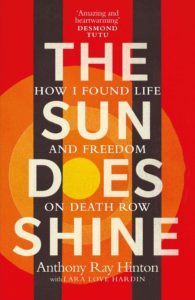 The Sun Does Shine: How I Found Life and Freedom on Death Row Anthony Ray Hinton (St. Martin’s Press) $26.99 . When the extraordinary legal aid advocate and founder of Equal Justice Initiative Bryan Stevenson says that former death row prisoner Anthony Ray Hinton inspired him more than anyone he has ever met and when he notes that this new memoir will “inspire our nation and readers all over the world” it is not just typical back-cover hype. The Sun Does Shine will be remembered as a book that is both illuminating and emotionally powerful, simple and complex, and destined to be considered a classic in American prison literature.
The Sun Does Shine: How I Found Life and Freedom on Death Row Anthony Ray Hinton (St. Martin’s Press) $26.99 . When the extraordinary legal aid advocate and founder of Equal Justice Initiative Bryan Stevenson says that former death row prisoner Anthony Ray Hinton inspired him more than anyone he has ever met and when he notes that this new memoir will “inspire our nation and readers all over the world” it is not just typical back-cover hype. The Sun Does Shine will be remembered as a book that is both illuminating and emotionally powerful, simple and complex, and destined to be considered a classic in American prison literature.
As those who have read Stevenson’s much-acclaimed Just Mercy: A Story of Justice and Redemption, one of our best sellers here at Hearts & Minds and captivating narrative nonfiction par excellence, Mr. Hinton’s story will be familiar; Stevenson became his attorney after Hinton spent decades on death row as court appointed attorneys and corrupt judges failed to re-hear an obviously botched adjudication. That by the end of Just Mercy Hinton remained on Death Row for a crime he obviously did not commit is a powerful indication of the racism, injustice, and fallibility at the heart of the American criminal justice system. A graduate of Harvard Law (after graduating from the American Baptist Eastern University in Philadelphia) Stevenson is one of the most esteemed advocates for prison reform, representing those unjustly accused, for incarcerated children, and for those, like Hinton, who spend their days in awful conditions in a cage literally next to an electric chair.
Mr. Hinton calls him “God’s best lawyer.”
There is much about The Sun Does Shine that will not be surprising to those who have followed conversations about mass incarceration, racial bias in sentencing, and the capriciousness of judges and courts. That the rights – not to mention the dignity – of prisoners are routinely violated is not new news. Still, Hinton’s voice is so plain and strong, his story so compelling, his humanity so earnestly shared (oh does that man love his mama and his home church and his best friend Lester) that even the horrible legal setbacks that we almost expect are jarring, like that punch to the solar plexus that James Baldwin famously describes. For those with tender hearts, this story is hard to read. The evidence against Ray is so very spurious and the courts are systematically incorrigible. One can hardly believe that such stuff passes for justice in this land of the free.
The exasperating horror show of racist prosecutors and incompetent lawyers and cruel judges is only part of the anguish of Hinton’s experience. He narrates in plainspoken prose other surprising details – the smell of burned bodies after an electrocution, the sorrow of missing an inmate after his execution, the weird, weird way in which prison guards try to be extra-friendly the week before they kill you. Life on death row includes obviously poignant moments of hard revelations and hard goodbyes. Anthony Ray’s gift of Southern storytelling, conjuring his mama’s cooking alongside the nearly inedible meals at the prison, for instance, makes The Sun Does Shine more than a screed or harsh journalistic report; it is deeply, deeply human and beautifully humane. What a story!
Attorney Stevenson’s legal persistence and personal care brings additional plot and texture to the story but it is Hinton’s good humor and faith (and a vivid imagination in which he conjures ways to pass the time by daydreaming that he plays professional sports, travels the world, marries Halle Barrie and then Sandra Bullock) that make Sun so readable. That Mr. Hinton shares his own inner life – vacillating between understandable hatred and bitterness to extraordinary forgiveness and Christian virtue – is instructive. This is not the simple story of Hinton’s rage nor the simple story of a saint’s serenity; it is not even the story of a clear trajectory from hatred to forgiveness. Rather, Mr. Hinton honestly shares the complexity of feeling hatred and faith-born grace sometimes within the same day. His emotional life is often surprisingly upbeat but is understandably messy. Hinton has much to teach us all about self-awareness and goodness and forgiveness and honesty and a proper righteous anger against injustice. And how to hold on to hope in the darkest of times.
There are chapters in The Sun Does Shine that are so unexpectedly beautiful that I could hardly choke back tears; if you love good books, you, too will be moved. There is the awful ritual of the death row inmates banging on their bars when a prisoner is taken to the death chamber – they want him to know he is not alone, they call out his name bringing some measure of care to the fearful about to be killed. And there are scenes of Ray talking about mundane stuff with guards and meaningful stuff with other prisoners and lovely remembrances of his childhood and youth. There is a breath-taking scene of racial reconciliation. There is (I don’t want to spoil too much) one of the most beautiful scenes you will ever read about a book club – oh, I wish I could say more, but I won’t. And there is the inspiring beauty of a life-long friend who visits weekly for 30 years, walking Ray through the eventual death of his mother who never sees her son exonerated.
There is much pain in this story of a man wrongly accused and there is much to inspire us to abolish the obviously unreliable and unjust procedures of capital punishment. But there is humor and joy and goodness aplenty. Desmond Tutu says that Hinton’s story restores our faith as it offers “inspiring proof of the inability to condemn a man’s capacity for hope, love, and joy.” As Barry Scheck, attorney and director of The Innocence Project observes, “The Sun Does Shine is the gripping and inspirational story that the public has been waiting for.”
This is not high literate memoir (although, again, there are deeply satisfying turns of phrases and beautiful, bookish episodes.) But it is a powerful, epic story, and combines the characteristics of autobiography, memoir, and narrative nonfiction. You’ve got to read The Sun Does Shine!
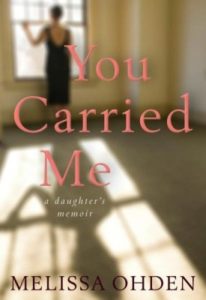 You Carried Me: A Daughter’s Memoir Melissa Ohden (Plough Publishing) $19.99 I may have mentioned this in a previous BookNotes but must name it again — it was a beautiful, captivating read, well told, but not exceptionally dense or heavy. The story is (on the surface, at least) a simple one, but it is rendered with such wise introspection and honesty that it became not only a great, entertaining read, but a gentle, good reminder about the meaning of love and redemption.
You Carried Me: A Daughter’s Memoir Melissa Ohden (Plough Publishing) $19.99 I may have mentioned this in a previous BookNotes but must name it again — it was a beautiful, captivating read, well told, but not exceptionally dense or heavy. The story is (on the surface, at least) a simple one, but it is rendered with such wise introspection and honesty that it became not only a great, entertaining read, but a gentle, good reminder about the meaning of love and redemption.
Here is what is says on the back cover:
Melissa Ohden is fourteen when she learned that she was a survivor of a botched abortion. In this intimate memoir, she details the search for her biological parents and her own journey from anger and shame to faith and forgiveness.
I had the privilege of being a judge in a religious book award panel earlier this year and had to read through a basketful of evangelical testimonials and memoirs. Most were fine stories, told adequately, but not memorable. Of all the books in that “nominated” list, this was one of the very best. That it received a high recommendation from the important Kirkus Reviews says much. I think.
You Carried Me is more than a story that illumines the powerful bond between mother and child, but it is at least that. It is also the journey (decades in the making) of a woman coming to terms with her past, coming to know God’s grace, and becoming the kind of person who can hear with empathy her birth mother’s hard story. That Ms Ohden is now a social worker makes sense; she has worked in the fields of substance abuse, mental health, domestic violence and child welfare. She is founder of the Abortion Survivors Network, an important but often overlooked voice in the polarized debates about choice and abortion. Kudos to our Anabaptist friends at the Bruderhof community, who do such fine books in their Plough Publishing line. You Carried Me deserves much credit as a well-told and moving story with a very needed message
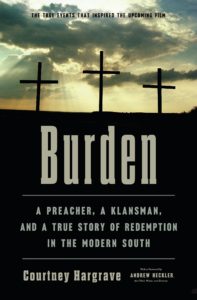 Burden: A Preacher, a Klansman, and a True Story of Redemption in the Modern South Courtney Hargrave (Convergent) $26.00 It isn’t every day a book comes along that was written in parallel at the same time an esteemed Hollywood film-maker was making a major motion picture of the same story. Andrew Heckler wrote the foreword to Hargrave’s book, telling how he was drafting the movie script even as she was writing the book; neither was based on the other. Still, the film will get a lot of attention as it is produced by Robbie Brenner of Dallas Buyers Club fame and stars Forest Whitaker, Usher, and other big names. It premiered briefly at Sundance, and will open nation-wide, soon.
Burden: A Preacher, a Klansman, and a True Story of Redemption in the Modern South Courtney Hargrave (Convergent) $26.00 It isn’t every day a book comes along that was written in parallel at the same time an esteemed Hollywood film-maker was making a major motion picture of the same story. Andrew Heckler wrote the foreword to Hargrave’s book, telling how he was drafting the movie script even as she was writing the book; neither was based on the other. Still, the film will get a lot of attention as it is produced by Robbie Brenner of Dallas Buyers Club fame and stars Forest Whitaker, Usher, and other big names. It premiered briefly at Sundance, and will open nation-wide, soon.
While the movie may get mixed reviews there is no doubt that Ms. Hargrave’s telling of this extraordinary story will get nothing but raves. It is a moving story, well told, with lots of local feel and social background. From the first sentence describing the landscape, I knew this was going to be a book I’d greatly appreciate. As the unexpected story unfolds, I couldn’t stop gapping, mouth open, head shaking. That’s the kind of reaction one gets from a good book, even when one knows what to expect.
As the title and back cover copy explain, this is a true story set mostly in a formerly prosperous mill town, now in a downturn, named after a former slave plantation, Laurens South Carolina. It is about a hateful, racist guy who opens a KKK museum which brings to the town the national media – not to mention plenty of both protestors and white nationalist supporters. This guy and ends up falling in love with a woman who teaches him a better way to be, leading him out of the museum, the Klan and into – well, you have to read it yourself.
A black pastor named David Kennedy who grew up in the town and became a civil rights spokesperson develops a friendship with this main protagonist – his name is Michael Burden – and those are the bare-bone facts of this harrowing tale. Can an act of compassion shake a community in the deep South and help, even in a small way, undo centuries of racial violence? Can an African American pastor and washed up Klansman become friends? It is an inspiring story, but like all truly good stories, it is not as easy as it sounds.
Burden has been called a “spellbinding Southern epic.” The creative and caring journalist Courtney Hargrave beautifully uncovers events behind the story that is told in the upcoming film, which, by the way, won the 2018 Sundance Audience Award.
As it says on the back cover:
Hargrave explores the choices that led to Kennedy’s and Burden’s friendship, the social factors that drive young white men to join hate groups, the intersection of poverty and racism in the divided South, and the difference one person can make in confronting America’s oldest sin.
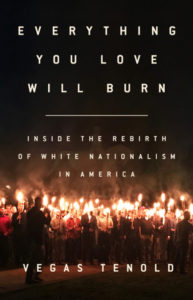 Everything You Love Will Burn: Inside the Rebirth of White Nationalism in America Vegas Tenold (Nation Books) $27.00 I started this new book the weekend of the anniversary of the awful alt-right uprising in Charlottesville VA a few weeks ago. I guess I wanted a way to commemorate the weekend and understand this growing nationalist impulse in American culture; I wanted to learn more and somehow spend time pondering this cancer in the culture.
Everything You Love Will Burn: Inside the Rebirth of White Nationalism in America Vegas Tenold (Nation Books) $27.00 I started this new book the weekend of the anniversary of the awful alt-right uprising in Charlottesville VA a few weeks ago. I guess I wanted a way to commemorate the weekend and understand this growing nationalist impulse in American culture; I wanted to learn more and somehow spend time pondering this cancer in the culture.
Alas, it was only a few weeks later when our area in York County had its own outburst of racist nonsense, with KKK and neo-Nazi propaganda showing up under the windshields of cars at a local mall.
The very night I was inviting local evangelical and mainline pastors to sign on to an inter-faith statement unequivocally condemning white supremacy of this sort (kudos to those courageous leaders who signed it; I’ll bit my tongue about those who did not) I realized that the group whose out of state address was on this evil propaganda is one of the several groups that this brave author tells us about. All of a sudden I realized anew just how very important and relevant this riveting story is.
And, again, just how important quality narrative nonfiction can be.
I don’t need to tell you much about this other than saying it is new journalism, if you will; but not gonzo, even though there are some pretty wacky moments. Mr. Tenold is brave to embed himself in various neo-Nazi, white supremacist, and KKK chapters. It is remarkable how he earns their trust as a fair reporter; it seemed somehow even more courageous of him when we realize that many of the members of these (usually small) groups actually overlap and all are, naturally, suspicious of him.
He doesn’t say as much about it as I wish, but this kind of stuff can get you killed.
Some of these groups, like the viciously jack-booted Hammerskin Nation skinheads (whose propaganda has been seen in our fair town not too many years back) are not to be messed with. Sure they mostly listen to white power hard rock and drink a lot of bad beer and make a fetish out of their various tattoos and levels and badges, but they will stomp your face bloody if you don’t like their vile racial rants or their anti-LGTBQ shtick or their gross anti-Semitism. Think of the harrowing scenes in movies about the Mafia or books about the Hell’s Angels or the last seasons of Breaking Bad; Vegas was in with some of these sorts, it seems, even if they are motivated by grievance and fear and ideology rather than money and drugs, but the vibe is there. He’s in with ‘em all and the book had moments of pretty high drama.
It obviously wasn’t easy for Mr. Tenold to earn the trust (let alone cooperation) of these dangerous yahoos, but learning how tricky it was is almost at times humorous. Tenold develops trust with one guy in one group only to find that he is considered not radical enough, or maybe too radical, to be trusted by other far-right groups. This nationalist group doesn’t like that white supremacist crew and none like that small Nazi gang who are jealous of that Aryan club. Should they fly the Confederate flag or the KKK colors? Even within the alt-right nationalist network there is backbiting and competition. Who knew nationalist populism was so hard?
The in-house squabbles are sometimes just personality issues among larger-than-life characters — big, weird fish in small fascist ponds, but sometimes the differences range from how brutal and severe their evil attitudes are; that is how hard-core their hate may be. Other differences were about their nearly delusional views of what strategy they might develop to change American culture. (Most, frankly, are not that interested in politics, but nearly all agree that the Trump campaign was good for their cause and most told Tenold that Trump and his movement emboldened them.)
Much of this reminded me of the debates, both ideological and strategic, among the far left. (If I never hear another argument about Trotsky vs. Marx ever again I will be happy.) And (let’s be honest, here) among church folks, too. Yep, I guess it’s true that many who care deeply about their convictions – righteous or unrighteous — end up in partnerships with others, and there the sparks can fly. According to Tenold, when the sparks fly with these guys, it might include dynamite. Seriously.
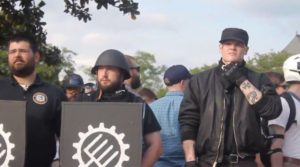 Still, while a few of the alt-right white guys this intrepid reporter meets are truly unhinged, some are somewhat intelligent and seem, at times, almost reasonable and somewhat likable. Matthew Heimbach of the Traditionalist Worker Party, is one of the major characters that Tenold comes to know. He is a person that a good friend of mine crossed paths with years ago (Episodes of him starting white pride student clubs at places like Towson State University are described. I recall talking with Christian groups on campus a few years ago about how to respond to this stuff and as I was reading Everything You Love Will Burn I got this sinking feeling in my gut – oh, God, it’s that guy that my friends used to debate, trying to call him to repentance and sanity. Little did we know how ideologically dangerous he’d become, how prominent…)
Still, while a few of the alt-right white guys this intrepid reporter meets are truly unhinged, some are somewhat intelligent and seem, at times, almost reasonable and somewhat likable. Matthew Heimbach of the Traditionalist Worker Party, is one of the major characters that Tenold comes to know. He is a person that a good friend of mine crossed paths with years ago (Episodes of him starting white pride student clubs at places like Towson State University are described. I recall talking with Christian groups on campus a few years ago about how to respond to this stuff and as I was reading Everything You Love Will Burn I got this sinking feeling in my gut – oh, God, it’s that guy that my friends used to debate, trying to call him to repentance and sanity. Little did we know how ideologically dangerous he’d become, how prominent…)
Matthew, (who was raised in a church, btw) was trying, oddly to unite skinheads and the KKK and other fiery racists (the “boots”) with the intellectual architectures of the alt-right like Richard Spencer and Steve Bannon (who they called “the suits.”) He goes from backwoods meetings with Aryan nationalists in the deep South and National Socialists (aka Nazis) in the rustbelt mid-West to speaking to Republican congresspeople in the esteemed GOP Capitol Club across from the Capitol. This stuff is riveting and nearly unbelievable.
Many of the folks in these far-right gangs are poor and pathetic, and I found myself feeling empathy, at least, for some of the sad sacks with their ragged KKK outfits and stupidly silly, secret traditions, costumes and half-baked rituals. There is a scene of a KKK funeral and another of a KKK wedding and both were so fascinatingly, humanly, told that I almost forgot my revulsion of such horrid stuff. That this left-wing, seemingly secular writer doing this brave expose could conjure any sympathy for these devious characters with their evil ideas is itself a good indication of the quality of this moving narrative; in fact, at one point he himself worries about his own “Stockholm Syndrome” as he learned to care for some of these damaged folks. I appreciate that, as it would be easier to merely demonize them in one-dimensional dismissal. Geesh, I almost felt bad for the one dude who got his huge swastika tattoo inked on himself backward.
And so, as I’m reading several chapters at a time, late one night I turn to a new chapter and it is called “Harrisburg.” Whoa! There isn’t that much local color in this chapter, actually, as it features mostly a story about a failed attempt at a unifying rally with several different groups with conflicting styles and views. They do go to the local Dicks Sporting Goods store, where I’ve been, to buy some pepper spray and have a funny debate about which kind works best. The organizer, who hoped for a more moderate, united front, was frustrated at the vile public speeches given – apparently some of the other leaders didn’t get the memo that they were to turn down the hateful rhetoric to soften their image and improve their public appeal. More likely, they were privy and just weren’t about to back-peddle their white supremacy spiel for the sake of some reasonable alt-right movement. The Harrisburg event, shall we say, didn’t go well.
In Everything You Love Will Burn: Inside the Rebirth of… you not only get a glimpse of all kinds of far right hate groups but you learn about their history, their leaders, and some of their odd secrets. You follow Matthew as he becomes increasingly radicalized; month by month by month as the book itself unfolds. One can see where it is leading, now in retrospect, even as the author could not at the time. He almost didn’t attend the Unite the Right Rally in Charlottesville as he was drawing the book to a close. Matthew convinced him it might be bigger and more important than many of the other nearly silly rallies and marches to which Tenold followed him; little did either of them know how it would end.
There is some talk of religion in this book, but even more hate. There is some tenderness, but even more violence. There are some good words, but much more profanity. And there is some outrageous neo-Nazi street fighting and KKK cross burning and dramatic, evil high-jinx, but there’s much more that is more mundane— conversations over pancakes at the local diner, lectures at the local college campus, long car rides here and there, dumb conventions and meetings and endless white supremacy confabs with the same gang of poor white folks and delusional “leaders” who are often nearly comical in their lack of common sense and social skills. This book is high octane at times, obviously, but it isn’t all ball-of-fire drama; The Rolling Stones’ “Street Fightin’ Man” would be a soundtrack for only a small part of it.
But, again, despite Vegas Tenold’s admirable willingness to write honestly about the humanity of these marginalized white folk and his honest reporting of their antics, let us be clear. This movement is hateful, dangerous, and real. It is growing. Perhaps it is best to ignore them when they come to your town, but, at least, we should know about them. Everything You Love Will Burn: Inside the Rebirth of White Nationalism in America by Vegas Tenold s a must-read for those who want an inside glimpse into this rising movement. It is also a good read for anyone that wants some nearly gonzo journalism, a daring reporter from the far left who has become friends with the guys in the far, far right. What a story! What a read!
 The Hundred Story Home: A Memoir About Finding Faith in Ourselves and Something Bigger Kathy Izard (Nelson) $16.99 I hope that most Hearts & Minds readers know the moving story of the formerly homeless artist Denver Moore who co-authored, with Ron Hall, his story Same Kind of Different as Me, made into a very touching movie last year. The wonderful follow-up to that memoir was What Difference Do It Make? and, just released this season, the eagerly awaited new one by Hall, Working’ Our Way Home. Those books (whether you’ve read them or not) and that story is a key to Izard’s good book.
The Hundred Story Home: A Memoir About Finding Faith in Ourselves and Something Bigger Kathy Izard (Nelson) $16.99 I hope that most Hearts & Minds readers know the moving story of the formerly homeless artist Denver Moore who co-authored, with Ron Hall, his story Same Kind of Different as Me, made into a very touching movie last year. The wonderful follow-up to that memoir was What Difference Do It Make? and, just released this season, the eagerly awaited new one by Hall, Working’ Our Way Home. Those books (whether you’ve read them or not) and that story is a key to Izard’s good book.
In a way, The Hundred Story Home is a standard Christian memoir; a story of being raised in a fine family, growing up with big questions about the meaning of things, an on-again, off-again faith journey. Izard is not simplistic or overly fundamentalist (she is a fairly mainline Presbyterian, it seems.) The book is replete with quotes from fascinating writers from Anne Lamotte to Anne Patchett, and lines from novels such as A Prayer for Owen Meany and The Little Prince. She is fond of theological writer Frederick Buechner but cites Joseph Campbell and Pico Iyer as well. It’s a thoughtful, interesting, somewhat literary faith journey, for sure.
And then she meets Denver Moore, the African American formerly homeless drifter guy known for his sardonic wit and candid insistence that we truly care for the poor and homeless. She brings him to a fancy luncheon – she’s the kind of competent professional woman that organizes fund-raising luncheons – and proudly shows him the very good, multi-faceted urban mission in Charlotte for which the fund-raiser is advocating. She is sure he’ll be impressed with the different sorts of services, the holistic and sophisticate nature of their social service. When Denver seems unimpressed and asks bluntly “Where are the beds?” She simply is astonished. They don’t do that kind of work; they serve the homeless but don’t want to go there. They just can’t. Why doesn’t he understand that and appreciate the good that they do.
And so in the middle of this charming narrative, her memoir of faith and doubt and insight and growth takes a quantum leap into the arms of a faithful God who calls us, sometimes, to do big, big stuff. How does one discern the voice of God? Is Denver’s chiding them to do this even legitimate? (Is it sensible?) When he goes public (in the too-long luncheon fundraising speech) with the word from God that she is called to build a homeless shelter alongside the already good work of the Urban Ministry Center in Charlotte, what is she to think? What are the public implications of our personal faith and what might any of us do to make the world more of what God might want? How does it feel to listen to God, to say yes, to take risks?
I won’t tell the rest of the story, but it’s an inspiring read, instructive in many ways, and full of surprises and joys and sorrows and good insights about her own – our own? —interior lives. As with most good memoirs, the author shows that much of our past story shapes our current lives, and being aware of our formative experiences in childhood and early adulthood may be more helpful than we realize. Izard says, “I wrote The Hundred Story Home not to convince you to solve homelessness in your community but to help you solve the homelessness in you.”
Now that’s a good story, a good reason to write a memoir; it’s about that classic, universal story of stories, finding our way home. Thank you Kathy Izard for allowing us to watch over your shoulder as you make your way there. And thanks for the book club discussion guide in the back, too – that makes it that much more useful. Memoirs are always good for book clubs and this one will be fodder for good conversation about our own search and our own service.
By the way, proceeds from the book go to the Charlotte Ministry Center and Moore Place. After Izard demonstrated that this Housing First program could succeed by leading a citywide effort to build Moore Place, she has worked on other civic projects, most recently the development campaign for HopeWay, Charlotte’s first nonprofit residential mental health treatment center.
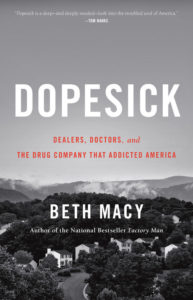 Dopesick: Dealers, Doctors, and the Drug Company That Addicted America Beth Macy (Little Brown) $28.00 I have not started this yet, but it is on my bedside table and I can’t wait. Beth Macy, you may recall, is the author of Factory Man: How One Furniture Maker Battled Offshoring, Stayed Local – And Helped Save an American Town a book we’ve touted often – it is such a thrilling read of narrative nonfiction, delving deep into small town intrigue and heroic, reformist sorts of business-world efforts as a furniture manufacturer tries to keep his plant open and his workers employed. Macy is a talented storyteller and excellent journalist, reporting well after doing months and months (if not years and years) of tenacious research. After Factory Man she released, in 2016, TrueVine, a brilliant true crime expose, laden with sorrow and racism and also delight and complexity and goodness. I suspect neither gets as much attention as they deserved.
Dopesick: Dealers, Doctors, and the Drug Company That Addicted America Beth Macy (Little Brown) $28.00 I have not started this yet, but it is on my bedside table and I can’t wait. Beth Macy, you may recall, is the author of Factory Man: How One Furniture Maker Battled Offshoring, Stayed Local – And Helped Save an American Town a book we’ve touted often – it is such a thrilling read of narrative nonfiction, delving deep into small town intrigue and heroic, reformist sorts of business-world efforts as a furniture manufacturer tries to keep his plant open and his workers employed. Macy is a talented storyteller and excellent journalist, reporting well after doing months and months (if not years and years) of tenacious research. After Factory Man she released, in 2016, TrueVine, a brilliant true crime expose, laden with sorrow and racism and also delight and complexity and goodness. I suspect neither gets as much attention as they deserved.
Since then, she has embedded herself in the world of opiate addictions, although as one reviewer reminds us, Dopesick is “not about the drugs. It’s a book about kids and moms and neighbors and the people who try to save them. It’s about shame and stigma and desperation.” Yes, but also, it’s about bad policy, greed, and corruption.
Tony Horwitz (of Confederates in the Attic) calls it “a harrowing journey through the history and contemporary hellscape of drug addiction.” And in this, I suspect it will be compared to the most important book of this sort in recent years, Sam Quinones Dreamland: The True Tale of America’s Opiate Epidemic. (Dreamland, you should know, won the National Book Critics Circle Award.)
Still, Dopesick also allows us to see the biggest picture, including the knowing corporate greed, naming both big pharma companies and notable regulatory failure. She shows the evolution of the epidemic, starting largely, as she shows it did, in the Virginia coalfields in the westernmost corner of the state to three culturally distinct communities. The story moves “from OxyContin in 1996 to other painkillers like Vicodin and Percocet to heroin, the pills’ illicit twin, and, later, even stronger synthetic analogs.”
“Heroin landed in the suburbs and cookie-cutter subdivisions near my home,” she writes, “in Roanoke in the mid-2000s. But it wasn’t widely acknowledged until a prominent jeweler and civic leader drove her addicted son to the federal prison where he would spend the next five years, for his role in a former classmate’s overdose death.”
As she covered that story she saw the overdose deaths spread north along I-81 from Roanoke. It infected pristine farm pastures and small northern Shenandoah Valley towns, as more users, and increasingly vigilant medical and criminal justice systems, propelled the addicted onto the urban corridor from Baltimore to New York. If you live in a city, maybe you’ve seen the public restroom with a sharps container, or witnessed a librarian administer Narcan.”
The early reviews of this have been exceptionally positive and Macy has again performed a service, crafting true stories with compelling words and sentences, telling what she has seen without the gonzo goofiness; this is urgent narrative nonfiction, deadly serious, compellingly, humanely told. I hope you, too, want to read it. Get it from your library, at least, or maybe order some for your next reading group.
Elizabeth Catte, who wrote the provocative, brief, powerful What You Are Getting Wrong About Appalachia, says,
Dopesick is both a tribute to those who lost and a fierce rebuke to those who took, and the new guidebook for understanding this quintessentially American crisis.
BookNotes

SPECIAL
DISCOUNT
ANY ITEM MENTIONED
20% OFF
order here
this takes you to the secure Hearts & Minds order form page
just tell us what you want
inquire here
if you have questions or need more information
just ask us what you want to know
Hearts & Minds 234 East Main Street Dallastown PA 17313
read@heartsandmindsbooks.com
717-246-3333
